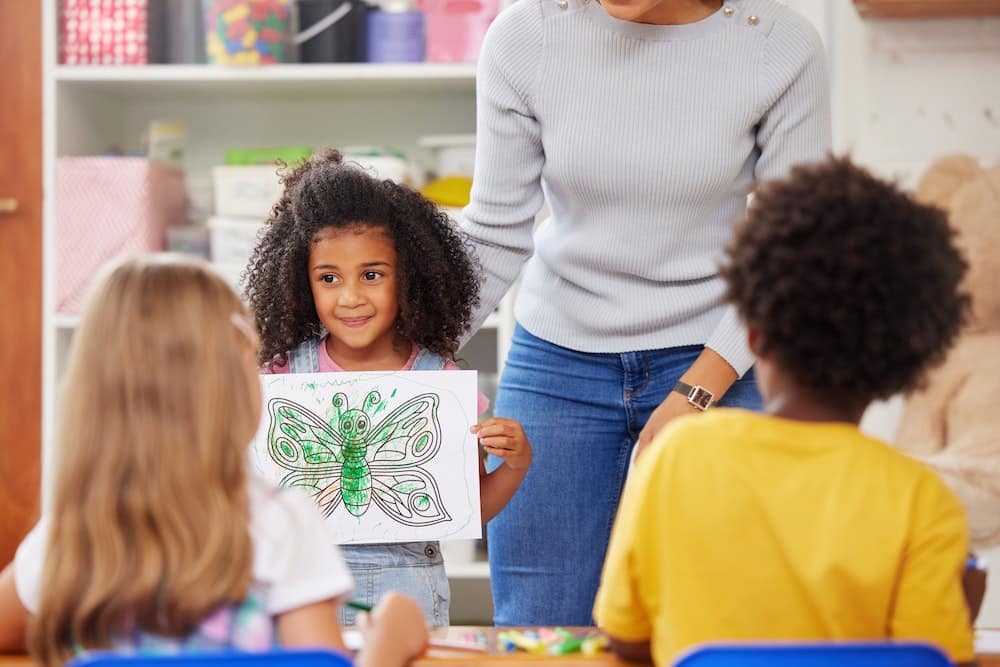What role can art therapy play in the mental health of children with autism?

Art therapy has long been recognized for its therapeutic benefits, with its roots tracing back to the early 20th century. Today, it is gaining increasing attention for its potential to help children with Autism Spectrum Disorder (ASD) in enhancing their mental wellness. Art therapy, a form of creative-based therapy, uses activities such as drawing, painting, and sculpting to facilitate communication, self-expression, and personal development. For children with autism, who often struggle with communication and social skills, art therapy can provide a unique platform to express their feelings and thoughts. It also aids in their sensory integration, as they engage with different materials and textures during art activities.
Art Therapy and Autism: A powerful combination
The use of art therapy with children with autism might seem unconventional at first glance. Autism, after all, is a neurological disorder that impacts social interactions, communication, and sensory processing. However, art therapy reaches beyond the constraints of verbal communication and taps into the visual, tactile, and creative aspects of communication. In other words, it provides a non-threatening, creative and playful approach, allowing the child to express and understand themselves in a way they can handle.
A lire aussi : How does the concept of « rewilding » benefit ecosystems and biodiversity?
In recent years, several studies have brought attention to the benefits of art therapy for children with autism. One study by the American Art Therapy Association found that art therapy could enhance social skills, improve communication, reduce anxiety, and help children manage their emotions. Another study published in the Journal of Autism and Developmental Disorders found that art therapy could significantly reduce the symptoms of ASD.
Enhancing Social Skills through Art Therapy
Children with ASD often face difficulties in social interactions. They may have trouble understanding others’ perspectives, emotions, and non-verbal cues. Art therapy, however, can provide an opportunity to develop these skills in a safe and supportive environment.
A lire également : How does green infrastructure contribute to climate resilience in urban areas?
During art therapy sessions, children engage in group activities where they learn to cooperate, share materials, take turns, and respect the works of others. They also learn about empathy as they understand different perspectives through their peers’ artwork. Over time, these experiences can help children improve their social skills and form positive relationships with others.
Improving Communication with Art Therapy
Communication is another area where children with autism often struggle. They may have difficulty expressing their thoughts and feelings verbally, leading to frustration and misunderstandings. Here’s where art therapy comes in: it offers a non-verbal form of communication.
Through artwork, children can express their internal world, which may otherwise be hard to articulate. The therapist can then interpret these expressions, aiding in understanding the child’s thought process. This creative form of communication can alleviate the pressure of verbal communication and encourage a child to open up. Moreover, it can foster self-awareness and self-expression, crucial aspects of mental health.
Sensory Integration and Art Therapy
Many children with autism have sensory processing issues. They may be oversensitive to certain textures, sounds, or lights, which can lead to discomfort or even distress. Engaging with art materials, particularly in a sensory-friendly environment, can assist in sensory integration.
During art therapy, children encounter various textures, such as the smoothness of paint, the softness of clay, or the roughness of sandpaper. Gradually, they become more comfortable with different sensory inputs, which can help them manage their sensory sensitivities better. This sensory-based interaction is not just therapeutic, but also encourages exploration and creativity.
In a world where words can often become overwhelming, art therapy provides a respite for children with autism. It introduces a language of colors, shapes, and textures, which can be incredibly powerful in bridging communication gaps, enhancing social skills, and promoting sensory integration. While more research is needed to fully understand art therapy’s impact on children with autism, the current findings are promising and pave the way for further exploration in this field.
Occupational Therapy vs Art Therapy: Different Approaches, Similar Objectives
Occupational therapy and art therapy are two distinct forms of therapy that are beneficial for autistic children, though they approach the child’s development from different angles. Both aim to improve the quality of life and enhance the capabilities of children with ASD, but they focus on different areas of development.
Occupational therapy for autistic children typically focuses on improving daily living skills, such as dressing, eating, and grooming. It also addresses sensory integration issues, aiding children in managing their sensitivities towards various sensory stimuli. Occupational therapists use a variety of techniques, including sensory integration therapy, fine motor skills development, and behavioral strategies, to help children become more independent and functional in their daily lives.
On the other hand, art therapy concentrates more on emotional well-being and expression. The creative arts used in art therapy serve as a medium for autistic children to express their thoughts and emotions, which they might struggle with verbally. Art therapists guide children in exploring their feelings through art, helping them to understand and manage their emotions better.
Both forms of therapy can significantly improve the quality of life for children with autism. While occupational therapy helps children with the practical aspects of daily living, art therapy addresses their emotional needs, making them complementary approaches in ASD treatment.
Role of an Art Therapist: Guiding Children towards Self-expression
An art therapist plays a crucial role in administering art therapy for autistic children. Art therapists are trained professionals who understand the therapeutic use of art and its potential to heal and transform. They provide a safe and nurturing environment for children with autism to explore their feelings and make sense of their world.
During art therapy sessions, the art therapist encourages the child to engage in art-making. They do not focus on the artistic outcome but the process of creation. The therapist observes the child’s behavior, emotions, and thoughts during the art-making process, gaining insights into their mental state.
Art therapists facilitate communication between the child and their artwork. They assist the child in interpreting their own art, helping them to understand their emotions and thoughts better. Additionally, they guide the child in using art as a form of self-expression, encouraging them to convey their feelings and experiences through colors, shapes, and textures.
In essence, an art therapist empowers children with autism to express themselves creatively, thereby enhancing their emotional well-being and self-understanding.
Conclusion
The power of art therapy in improving the mental health of children with autism is undeniable. Art therapy taps into the visual, tactile, and creative aspects of communication, presenting a unique therapeutic opportunity for children who struggle with traditional forms of communication and social interaction.
From enhancing social skills, improving communication, aiding sensory integration, to providing a platform for self-expression, art therapy has multiple benefits for children on the autism spectrum. While it may not replace other forms of therapy like occupational therapy, it certainly provides an essential supplement that addresses the emotional needs of autistic children.
With the guidance of an art therapist, children learn to navigate their emotions and thoughts, using art as a language. As we continue to explore and gather more evidence-based research on the impact of art therapy, it holds great promise as a therapeutic tool to support and enhance the mental health of children with autism. Art, in its myriad forms, can indeed serve as a bridge, connecting children with autism to the world, and more importantly, to their inner selves.
